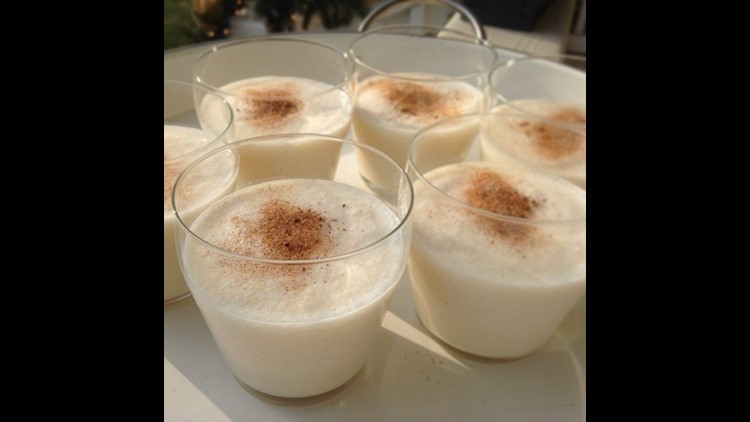Have you ever wondered why Eggnog is so synonymous with the holidays?
That sweet, thick, creamy, off-white liquid seems to be the drink of choice this time of year. But why is eggnog associated with Christmas? and why can’t you get it any other time of year?
According to food historian and Babson College professor Frederick Opie:
“The term eggnog evolved out of two slang words used in urban areas like colonial New York, Boston, Charleston, and Mobile: colonist referred to rum as grog; bartenders served rum in small wooden carved mugs called noggins. Thus the drink eventually became egg-n-grog and over time eggnog. When the American Revolution resulted in dwindling trade between North America and the Caribbean, Americans began to substitute locally distilled spirits or moon-shine for rum in their eggnog.”
The common Eggnog recipe used in the 1930s was as such:
Take one egg, separate white and yellow, add teaspoonful sugar to yellow and beat until light. Beat whites until very stiff. Beat one to two tablespoonfuls charred keg corn whiskey into prepared yellow. This is supposed to “cook” the egg. Gradually beat in the white. Pour into tall glass and drink. Milk and whipped cream may be added to taste. (Notes, Reports, and Essays, South Carolina Folder, WPA Records, Library of Congress)
An annotation for a WPA era Kentucky eggnog recipe states:
“Before prohibition on every Kentucky bar, there was a giant punch bowl full of eggnog a week or so before Christmas until well after the new year. In the home, it made its appearance on Christmas morning and there was always an ample supply”
Eggnog as we know it came from British aristocracy:
“In the winter, the wealthy would drink warm milk and egg beverages seasoned with pricey spices such as ground nutmeg and cinnamon and expensive liquors like brandy and sherry to keep it from spoiling.”
The seasonal drink traveled across the Atlantic in the 18th century with several modifications after it arrived in colonial American taverns and homes.
Opie says, “in colonial North America, the availability of dairy products and traded rum from the Caribbean made the drink popular among free commoners, white indentured servants, and enslaved Africans. Rum—the drink of the marginalized—became the substitute for the heavily taxed brandy and wine in the colonies.”
When the drink came to America, rum was substituted. However during the American Revolution, Opie explains, rum was replaced with moonshine since supplies of rum from the Caribbean were low. That scarcity could account for eggnog’s designation a special-occasion-only drink.



